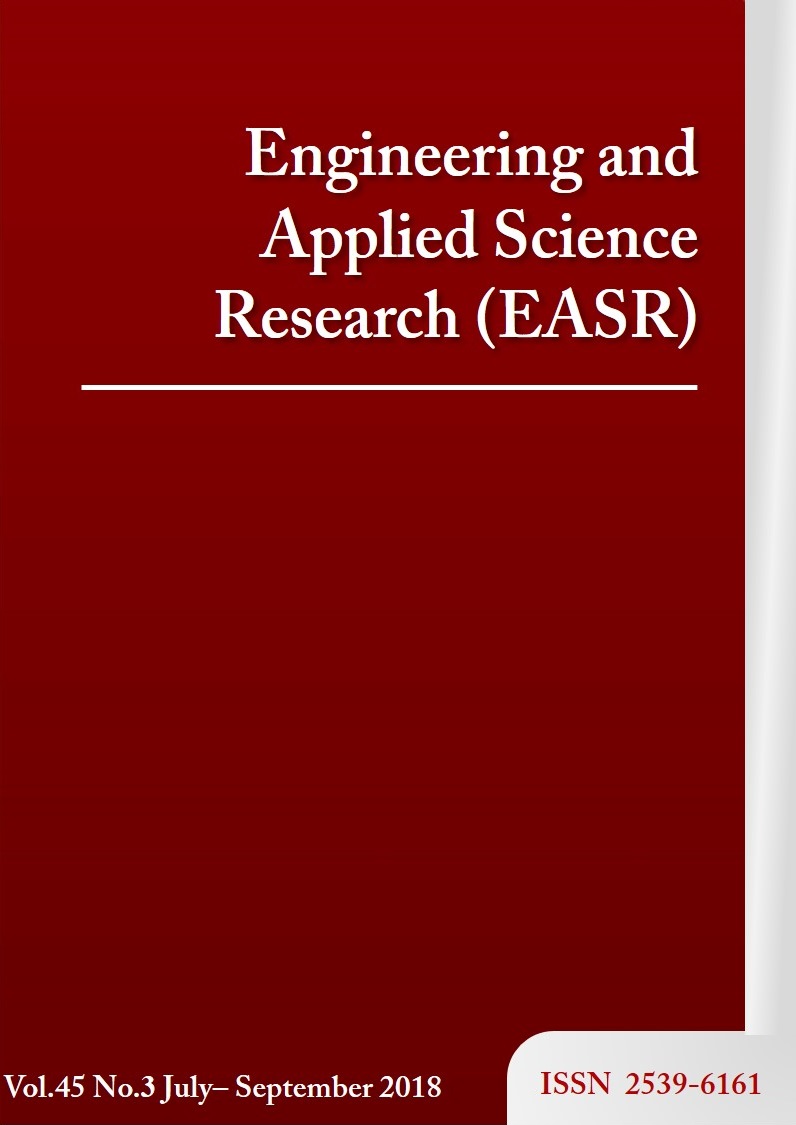Recycled ceramic tile composite for automobile applications, a comparative study with Nissan Jeep Cherokee brake pad
Main Article Content
Abstract
A ceramic tile/steel slag-graphite-Arabic gum composite was developed using conventional casting techniques for brake pad applications. The chemical properties of the phases present in the matrix of the developed composite were examined using X-ray diffractometry. Spatial configuration of the phases was viewed using scanning electron microscopy. Wear and thermal properties of the developed composite were also investigated. Comparisons of the properties of the developed composite and Nissan Jeep Cherokee brake pads were made. The results showed a partial homogeneity of second phase particles within a ceramic matrix. The developed composite brake pad showed better friction properties than commercial grade brake pads for up to 200 s. At longer times, the opposite was observed. The developed composite brake displayed lower wear rates (1.3 x 10-8, 1.8 x 10-8, 2.92 x 10-8 and 3.0 x 10-8 mm3/Nm at 25, 30, 35 and 40 N, respectively) and better thermal stability than those (2.1 x 10-8, 4.8 x 10-8, 6.15 x 10-8 and 4.2 x 10-8 mm3/Nm) of Nissan Jeep Cherokee brake pad. This implies an optimum combination of good wear resistance, friction properties and thermal stability for up to 200 s. Since brake application while driving is a short and intermittent process (< 3 minutes), the developed composite could serve as a replacement for asbestos brake pads for automobiles.
Article Details
This work is licensed under a Creative Commons Attribution-NonCommercial-NoDerivatives 4.0 International License.
References
[2] Kim SJ, Kim KS, Jang H. Optimization of manufacturing parameters for brake lining using taguchi method. J Mater Process Tech. 2003;136: 202-8.
[3] Fulvio A, Oriol F, Natalia M, Andres A, Xavier Q. Mineralogy and elemental composition of brake pads of common use in Spain; In: Herrero JM, Arostegi J, Gil PP, editors. SEM-SEA 2012; 2012 Jun 27-30; Bilbao, Spain. 2012. p. 154-5.
[4] Mathur RB, Thiyagarajan P, Dhami TL. Controlling the hardness and tribological behavior of non-asbestos brake lining materials for automobiles. J Carbon Sci. 2004;5(1): 6-11.
[5] Bashar D, Peter MB, Joseph M. Material selection and production of a cold-worked composite brake pad. World J Eng Pure Appl Sci. 2012;2(3):92-7.
[6] Ibhadode AOA, Dagwa IM. Development of asbestos-free friction lining material from palm kernel shell. J Braz Soc Mech Sci Eng. 2008;30(2):166-73.
[7] Ishidi EY, Kolawole EG, Sunmonu KO. Morphology and thermal property of alkaline treated palm kernel nut shell HDPE composite. J Emerg Trends Eng Appl Sci. 2011;2(2):346-50.
[8] Yawas DS, Aku SY, Amaren SG. Morphology and properties of periwinkle shell asbestos-free brake pad. Journal of King Saud University - Engineering Sciences. 2016;28:103-9.
[9] Idris UD, Aigbodion VS, Abubakar IJ, Nwoye CI. Eco-friendly asbestos free brake-pad: Using banana peels. Journal of King Saud University - Engineering Sciences. 2015;27(2):185-92.
[10] Ademoh AN, Adeyemi IO. Development and evaluation of maize husks (asbestos-free) based brake pad. Ind Eng Lett. 2015;5(2):67-80.
[11] Aigbodion VS, Agunsoye JO. Bagasse (sugarcane waste): non-asbestos free brake pad materials. Germany: LAP Lambert Academic Publishing; 2010.
[12] Das BS, Prakash PSR, Reddy VNM. An overview of utilization of slag and sludge from steel industries. Resour Conservat Recycl. 2007;50(1):40-57.
[13] Umamaheswara RR, Babji R. A review paper on alternate materials for asbestos brake pads and its characterization. Int Res J Eng Tech. 2015;2(2):556-62.
[14] Ruzaidi CM, Kamarudin H, Shamsul JB, Al Bakri AM, Alida A. Morphology and wear properties of palm ash and PCB waste brake pad. International Conference on Asia Agriculture and Animal; 2011 Jul 2-3; Hong Kong, China. Singapoore: IACSIT Press; 2011. p. 145-9.
[15] Hassan SB, Agunsoye JO, Bello SA. Ball milling synthesis of Al (1050) particles: morphological study and particle size determination. Ind Eng Lett. 2015;5(11):22-7.
[16] Peters ST. Handbook of composites. 2nd ed. USA: Springer; 1998.
[17] Asuke F, Abdulwahab M, Aigbodion VS, Fayomi OSI, Aponbiede O. Effect of load on the wear behaviour of polypropylene/carbonized bone ash particulate composite. Egyptian Journal of Basic and Applied Sciences. 2014;1(1):67-70.
[18] Lucas FMdS, Andreas Ö, Robert A. Handbook of adhesion technology: Germany: Springer-Verlag Berlin Heidelberg; 2011.
[19] Bello SA, Agunsoye JO, Hassan SB, Zebase Kana MG, Raheem IA. Epoxy resin based composites, mechanical and tribological properties: a review. Tribology in Industry. 2015;37(4):500-24.
[20] Agunsoye JO, Bello SA, Bello L, Idehenre MM. Assessment of mechanical and wear properties of epoxy based hybrid composites. Adv Prod Eng Manag. 2016;11(1):5-14.



